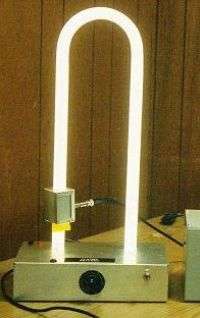Stealthy, Versatile, and Jam Resistant Antennas made of Gas

A new antenna made of plasma (a gas heated to the point that the electrons are ripped free of atoms and molecules) works just like conventional metal antennas, except that it vanishes when you turn it off.
That's important on the battlefield and in other applications where antennas need to be kept out of sight. In addition, unlike metal antennas, the electrical characteristics of a plasma antenna can be rapidly adjusted to counteract signal jamming attempts.
Plasma antennas behave much like solid metal antennas because electrons flow freely in the hot gas, just as they do in metal conductors. But plasmas only exist when the gasses they're made of are very hot. The moment the energy source heating a plasma antenna is shut off, the plasma turns back into a plain old (non conductive) gas. As far as radio signals and antenna detectors go, the antenna effectively disappears when the plasma cools down.
The antenna design being presented at next week's APS Division of Plasma Physics meeting in Orlando consists of gas-filled tubes reminiscent of neon bulbs. The physicists presenting the design propose that an array of many small plasma elements could lead to a highly versatile antenna that could be reconfigured simply by turning on or off various elements.
Source: American Physical Society





















